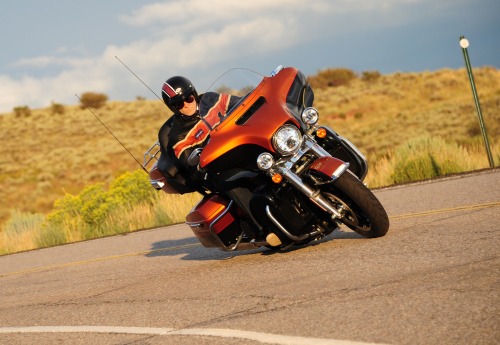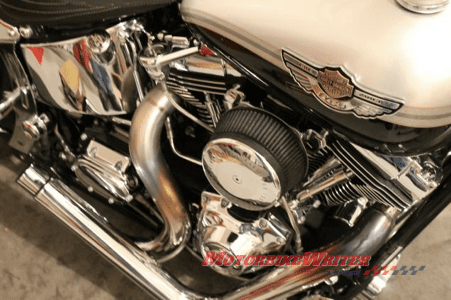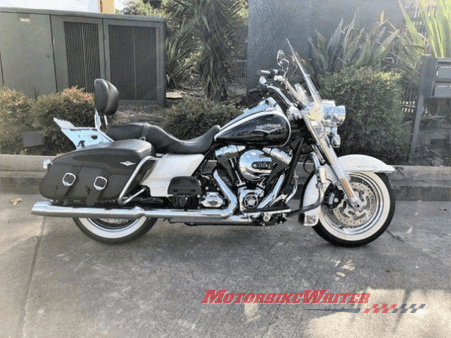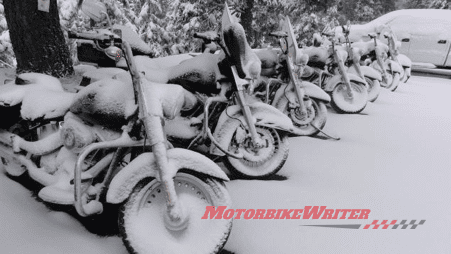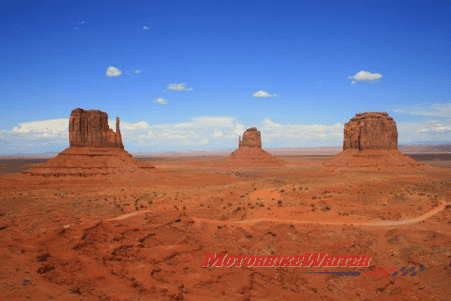Contributed post
Nothing beats Harley-Davidsons for touring. Long road trips are just better with a Harley. Its long wheelbase, combined with its larger rake angles, makes for a stable ride.
Massive torque allows you to ride down the road in top gear, without having to worry about shifting too often.
If you’re planning to take a road trip on your Harley, don’t forget these 5 important tips. Make your journey an adventure you’ll remember for the rest of your life.
1. Live in a large country? Start with a particular region
Australia, the United States, and Canada are huge countries. You may want to travel clear across the country. Or, even more ambitiously—around a country’s perimeter.
It’s best to start with a shorter, regional tour first, say the motorcycle touring experts at Australia’s Biker Bits website.
The reason, say the authors, is that to ride around Australia’s mainland would take at least a month—and more than 14,000 kilometres. (That’s 8699 miles for those in the US). If you plan a trip around Canada or the US, you’re also talking a long journey.
In Australia, that demands that you travel 466 kilometres—or 290 miles—a day for an entire month. That leaves precious little time to look at the scenery or take the ‘road less travelled’ to see some of the landmarks off the beaten path. By the time you reach your hotel or campsite, you’ll be too tired to do more than hope there’s a takeaway restaurant nearby.
A better way is to limit yourself to a particular region. That way, you can enjoy the best of both worlds—the open road—and the local charm.
2. Make sure equipment is adequate and tested
It goes without saying that you need to have your bike thoroughly checked over by an expert Harley-Davidson mechanic, to make sure it is fit for a long trip.
But that’s not all. You need to make sure that your tyres are suitable to both gravel and concrete roads—because you’ll probably want ones that will work in all kinds of terrain and weather you’ll face on the road, say the tour-seasoned professionals at Australian Motorcycle News.
Learn to pack light and appropriately for the road. Consider all the types of weather you’ll likely encounter. Pack clothing that will protect you no matter what.
Make sure you take plenty of water and sunscreen with you. The wind blowing past you as you sail along in your Harley can take a toll on your skin, if you fail to hydrate properly or protect your skin.
Most importantly, test out your cycle and your equipment. Maybe on a weekend jaunt before you take to the road for a longer trip.
Seat adjustments that feel OK on your commute to work may not feel so good after a few hours. Make sure you’ll be comfortable, or your dream road trip may turn out to be a nightmare.
3. If your first, consider an authorised Harley-Davidson tour
Image source: Gumtree
Harley-Davidson has partnered with Eagle Rider to plan and book motorcycle tours geared to Harley owners.
These types of tours involve terrain that best leverage the strengths of your bike. They are planned by tour professionals, who know how to balance an enjoyable time on the road, with superb scenery and experiences off road as well.
Tour professionals can help you choose a route that includes the best hotels or campgrounds.
A planned tour won’t be over-ambitious but rather will present just enough challenges to make every day an adventure.
When it’s your first time, it’s difficult to pace yourself, or know your limits. With years of experience in planning tours for Harley owners, professional tour operators know how to pace a tour to maximise enjoyment and minimise hassle.
Guided tours will have experts on hand in case something goes wrong. An important factor to keep in mind, particularly if this long road trip’s your first.
Authorised Harley tours are available in several countries around the world, including Australia, Canada, India, Mexico, Singapore, and the US.
4. Plan your tour route according to the season
Trapp Tours, an Australian tour planner, recommends that motorcyclists keep in mind the season when they plan a tour route.
That advice doesn’t only hold true Down Under, but wherever in the world you travel with your Harley. For instance, you wouldn’t want to take a road trip in North America’s Rocky Mountains in the dead of winter. Nor would you want to travel up north in Australia during the wet season and have to navigate flooded roads.
Keep in mind the seasonal and daily habits of animals you may encounter. Whether mating season in spring for Deer in the Appalachian Mountains or Kangaroo feeding time at dawn and dusk in Australia, exercise caution to avoid disturbing these native animals.
Other areas undergo periodic flooding or other weather hazards. Plan a trip somewhere else or postpone your trip until the weather conditions are more favourable.
If you have seasonal allergies that will affect you, carry enough medicine to compensate for the increased risk.
If you come from a smaller country and want to travel through a country as vast and sparsely populated as some areas in Australia or Canada, be aware of the distance factor.
It may be hundreds of kilometres between petrol (gas) stations and food and water or supplies. Plan accordingly. Pack enough spare fuel, food, and water to carry you through in case your cycle breaks down.
In many remote areas, you can’t count on your cell phone to bring help. Carry a tool case and know how to make minor repairs yourself.
Unless you know an area well, don’t go too far off the road to explore cross-country, lest you lose your bearings and become unable to get back to the road.
5. If travelling in a remote area, take specialised precautions
Make sure you create a daily travel plan. Share it with friends and family. Even authorities for extremely remote places.
Check in daily, so they will know you arrived safely at the end of the day, say the professional Harley-Davidson tour planners at TheLostAdventure.com. If you don’t check in within a reasonable amount of time, people back home can call authorities to check on you.
Make sure your GPS system is functioning properly. If you have a cell phone, find a locator app and turn it on so others can find you if all else fails. Carry portable battery chargers, so your cell phone and other mobile devices can function longer in case you become lost.
In remote areas, start and end your driving early. That way, you’ll be settled down in your campground or hotel before dark.
When you stop for petrol or food, check your bike to make sure everything’s working properly before you set out into remote territory again.
Armed with these tips and a good Harley, you’ll have a road trip you’ll remember for a lifetime.


